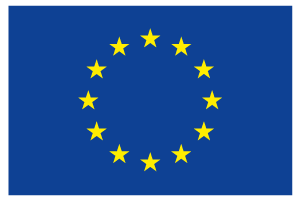Venture Philanthropy model for vamorolone development
The business model for development of vamorolone is through venture philanthropy. ReveraGen Biopharma Inc, the drug developer, has had no venture capital investors to date. Instead the company has accessed grant funding and partnered with stake holder foundations finance to carry out the complex process of developing vamorolone for the treatment of DMD.
Grant funding programs have included partnerships with:
- National Institute of Health
- EC Horizon 2020 frameworks programme
- Department of Defence CDMRP program (Congressionally Directed Medical Research Program).
Multiple international stake-holder foundations have partnered with ReveraGen through grants and venture philanthropy programs. The venture philanthropy contracts with many foundations share the risk of developing vamorolone, while also sharing the long-term ‘upside’ of future drug sales should the drug be brought to market for DMD (and other disorders). See Patient Group Funders for more information.
What is Venture philanthropy?
 Venture philanthropy (VP) aims to invest in organisations or activities by providing both financial and non-financial support in order to increase the social impact. Typically, VP uses many of the tools of venture funding to promote start-up, growth and risk-taking social ventures, but the return on investment is expected to include a strong benefit to society not simply a return measured in financial terms. It plays an important role in diversifying capital markets for not- for -profit and social purpose organisations and initiatives. For example, the Muscular Dystrophy Association’s MDA Venture Philanthropy (MVP) makes targeted investments in small pharmaceutical and biotech companies and in academics developing treatments and therapies for neuromuscular diseases. MVP adopts professional diligence and management processes and emphasises measurable results and impact. Projects are expected to be milestone-driven, contract-mediated and a return on investment is negotiated. This approach lowers the barriers to therapeutic development and leverages extensive expertise in the disease area and translational medicine.
Venture philanthropy (VP) aims to invest in organisations or activities by providing both financial and non-financial support in order to increase the social impact. Typically, VP uses many of the tools of venture funding to promote start-up, growth and risk-taking social ventures, but the return on investment is expected to include a strong benefit to society not simply a return measured in financial terms. It plays an important role in diversifying capital markets for not- for -profit and social purpose organisations and initiatives. For example, the Muscular Dystrophy Association’s MDA Venture Philanthropy (MVP) makes targeted investments in small pharmaceutical and biotech companies and in academics developing treatments and therapies for neuromuscular diseases. MVP adopts professional diligence and management processes and emphasises measurable results and impact. Projects are expected to be milestone-driven, contract-mediated and a return on investment is negotiated. This approach lowers the barriers to therapeutic development and leverages extensive expertise in the disease area and translational medicine.
What is the relevance of VP for rare diseases?

Venture Philanthropy has emerged as a potentially valuable venture model in Orphan Drug Development (ODD) to treat rare diseases. Traditional funding models fail due to the long development times of drugs, high risk of failure and limited market size of small rare disease patient populations. Grants from patient foundations, non-profit organisations and public bodies typically try to fill the financing gap during the early stage development of promising lead compounds. The VP model adopts Venture Capital (VC) concepts, providing funding alongside an expectation for a return on investment, but the desire for a social impact is a core driver not just financial return. This encourages risk taking and funding translational research at an early stage, before traditional VC funds are prepared to invest. This financing of basic research, early pre-clinical and clinical development and drug repurposing is crucial to advance and de-risk innovative potential therapies.
What are the benefits to patients?
Growing support for industry drug development from the non-profit sector brings disease-knowledge, patient-access for clinical trials and an understanding of the rare disease market that few traditional VCs can offer. This approach adds value beyond financing in an effort to bring new drugs more quickly to patients. In contrast to traditional grant funding the model encourages collaboration between funder and drug developers, but unlike grants, offers patient foundations the opportunity to recoup financially for reinvestment in future projects.
In adopting a VP model, funded teams need to demonstrate impact of the research, but there is also a greater onus for patient organisations and foundations to adopt an investor approach and management style to focus and drive the strategy, unlike some traditional “hands-off” models providing grants to particular research projects. Recognition of large scale funding needs in ODD is also encouraging foundations to pool funding and operate in a cooperative manner. This emerging trend increases the opportunities to professionalize their approach to investment and indeed grant giving and management. At the same time companies or academic groups developing lead compounds can benefit from engaging with VP investors that are deeply committed to the target disease area and often have relevant expertise including in legal issues, commercialization, IP, regulatory, clinical trial design and routes to clinic. With these new VP models, new horizons in data ownership and data sharing have emerged. The value of raw data, safety data and natural history data in rare diseases is critical for new drug development. In these new models, data sharing is a common factor and is considered as best practice. The value of data even from the failed trials is precious when it comes to small populations. Data is usually owned by patient organizations and it is used to support new promising research and promote faster drug development.
